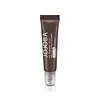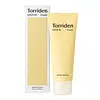What's inside
What's inside
 Key Ingredients
Key Ingredients

 Benefits
Benefits

 Concerns
Concerns

 Ingredients Side-by-side
Ingredients Side-by-side

Water
Skin ConditioningGlycerin
HumectantSimmondsia Chinensis Seed Oil
EmollientCaprylic/Capric Triglyceride
MaskingButylene Glycol
HumectantDipropylene Glycol
HumectantCetearyl Alcohol
EmollientEthylhexyl Palmitate
Emollient1,2-Hexanediol
Skin ConditioningGlyceryl Stearate
EmollientHydrogenated Poly(C6-14 Olefin)
EmollientHydrolyzed Hyaluronic Acid
HumectantSodium Hyaluronate
HumectantTrehalose
HumectantAllantoin
Skin ConditioningPanthenol
Skin ConditioningBetaine
HumectantAdansonia Digitata Seed Oil
EmollientHydrogenated Rice Bran Oil
Skin ConditioningCeramide NP
Skin ConditioningCeramide Ns
Skin ConditioningCeramide As
Skin ConditioningCeramide EOP
Skin ConditioningCeramide AP
Skin ConditioningPhytosphingosine
Skin ConditioningStearic Acid
CleansingCholesterol
EmollientSoluble Collagen
HumectantThymus Vulgaris Extract
PerfumingCamellia Sinensis Leaf Extract
AntimicrobialMentha Suaveolens Leaf Extract
AstringentCitrus Unshiu Peel Extract
MaskingPropanediol
Solvent2,3-Butanediol
HumectantVinyldimethicone
Hydrogenated Lecithin
EmulsifyingCetearyl Olivate
Sorbitan Olivate
EmulsifyingSucrose
HumectantCarbomer
Emulsion StabilisingTromethamine
BufferingXanthan Gum
EmulsifyingDisodium EDTA
Carthamus Tinctorius Flower Extract
Skin ConditioningEthylhexylglycerin
Skin ConditioningWater, Glycerin, Simmondsia Chinensis Seed Oil, Caprylic/Capric Triglyceride, Butylene Glycol, Dipropylene Glycol, Cetearyl Alcohol, Ethylhexyl Palmitate, 1,2-Hexanediol, Glyceryl Stearate, Hydrogenated Poly(C6-14 Olefin), Hydrolyzed Hyaluronic Acid, Sodium Hyaluronate, Trehalose, Allantoin, Panthenol, Betaine, Adansonia Digitata Seed Oil, Hydrogenated Rice Bran Oil, Ceramide NP, Ceramide Ns, Ceramide As, Ceramide EOP, Ceramide AP, Phytosphingosine, Stearic Acid, Cholesterol, Soluble Collagen, Thymus Vulgaris Extract, Camellia Sinensis Leaf Extract, Mentha Suaveolens Leaf Extract, Citrus Unshiu Peel Extract, Propanediol, 2,3-Butanediol, Vinyldimethicone, Hydrogenated Lecithin, Cetearyl Olivate, Sorbitan Olivate, Sucrose, Carbomer, Tromethamine, Xanthan Gum, Disodium EDTA, Carthamus Tinctorius Flower Extract, Ethylhexylglycerin
 Reviews
Reviews

Ingredients Explained
These ingredients are found in both products.
Ingredients higher up in an ingredient list are typically present in a larger amount.
This oil comes from the seeds of the desert shrub called Jojoba. It is more commonly known as jojoba oil, a non-comedogenic oil.
Jojoba oil does not contain fragrance and has many fatty-acids, making it a great soothing ingredient.
It also contains Vitamin E, a great moisturizing ingredient. Vitamin E is also an antioxidant and protects your skin against oxidative damage.
This ingredient humectant properties, meaning it helps draw moisture from the air. This helps keep your skin hydrated.
While jojoba has antibacterial properties, it is only able to kill some strains of bacteria.
Studies also show it helps in wound healing. In fact, Indigenous cultures have used jojoba as a moisturizer and to help treat burns for centuries.
Fun fact: Jojoba oil similar to natural human skin sebum, so it has a great effect on dry skin. It is also promising with helping to regulate sebum production.
Due to its fatty acid content, Jojoba oil may not be fungal acne safe. We recommend speaking with a professional if you have any concerns.
Learn more about Simmondsia Chinensis Seed Oil